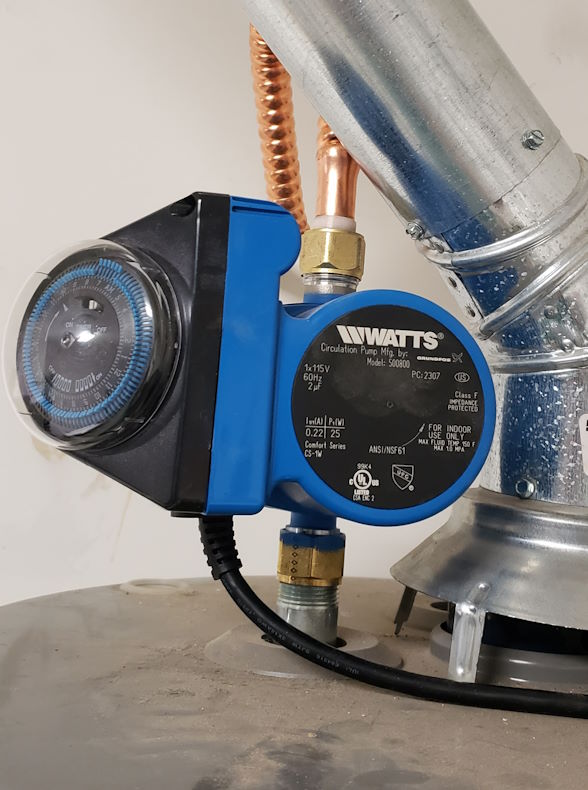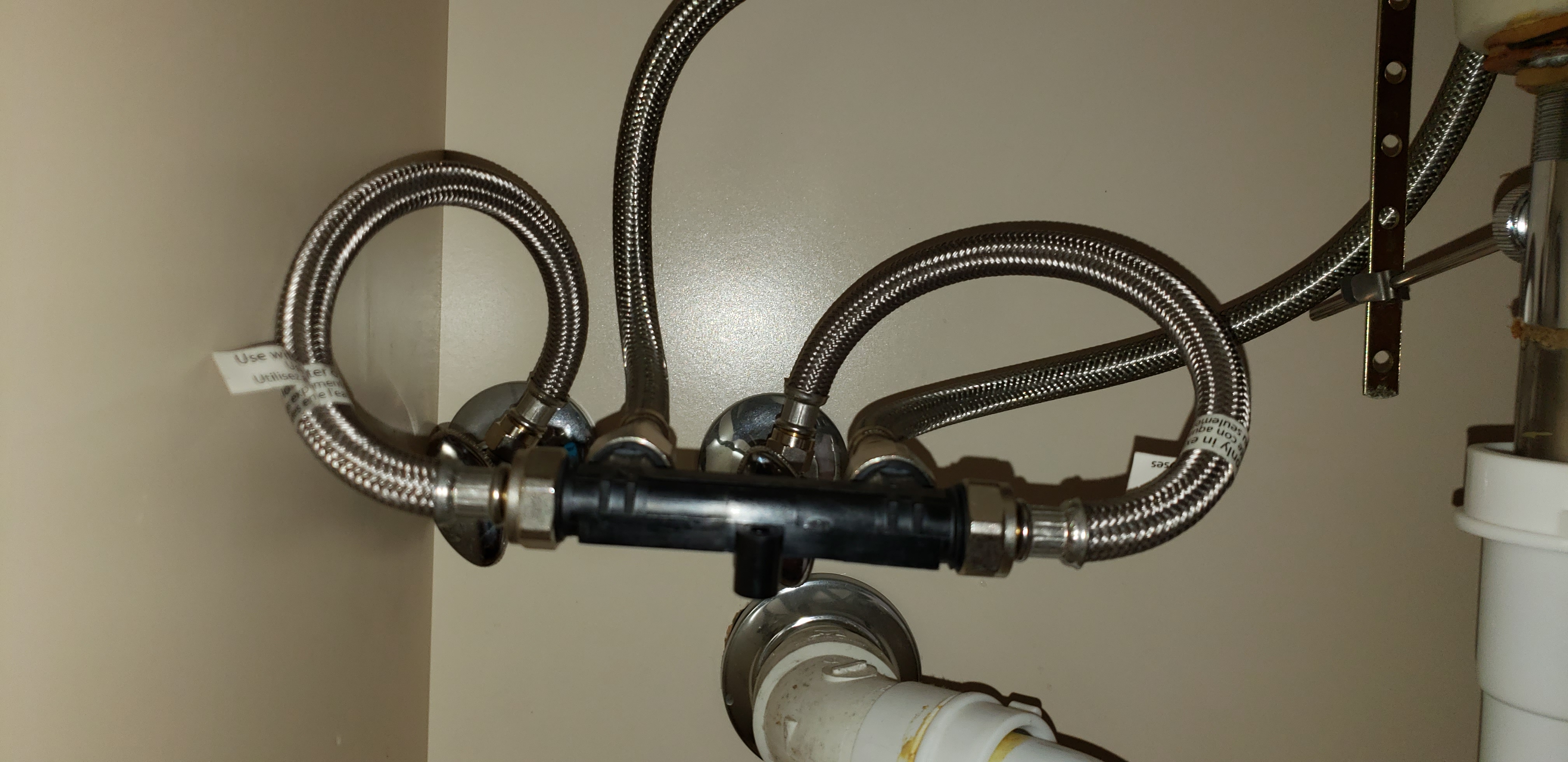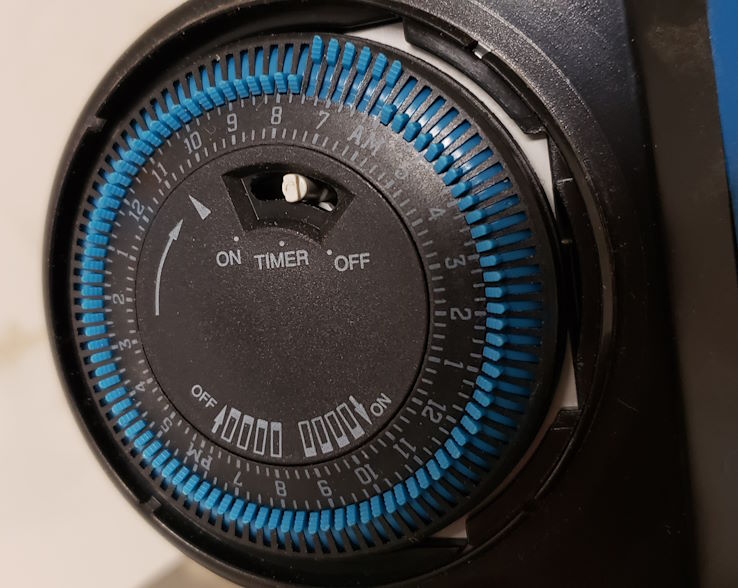Hot Water Recirculation Pump
We recently moved to a new house in Las Cruces, New Mexico and are working out a few minor issues. One thing we noticed is that the shower in the main bathroom takes a long time to get hot water. That is not very convenient and not cool to waste water in the Chihuahuan Desert by running cold water until it heats up. The reason for this problem is that the master bathroom is a long run from the hot water heater that’s in the garage and the hot water has to displace all of the cold water already in the pipe.
I searched for possible solutions and came up with something that was not too costly and also easy to install. This post describes the solution and how it worked out.
Solution - Hot Water Recirculating Pump
Some solutions would be costly by requiring extensive plumbing changes such as adding a tankless water heater closer to the shower. That might not even completely solve the problem as there is warm up time for the water and there would be the same delay issue in other parts of the house. The most appealing solution looked to be a hot water recirculating system that would be timed to deliver hot water when we typically need it in the morning.
The idea of the recirculating system is that a pump is attached to the hot line of the water heater to pump hot water out even when the hot water is not in use. Then a bypass valve located far away from the hot water heater returns the cold water to the water heater. Once the bypass valve sees water at a temperature of 100 degrees, it closes and no more cold water will flow back. At that point the hot water has replaced the cold water in the hot water line and the shower will immediately deliver hot water. The idea is that the pump is only turned on at times there will be a demand so that the system doesn’t waste natural gas to heat water when it isn’t needed.
We bought a Watts Hot Water Recirculating System at Home Depot and (spoiler altert) it turned out to be a nice solution.
Installation Part 1 - Installing Pump at Hot Water Heater
The gas and the hot water heater must first be turned off. Then a faucet on the hot water side should be opened to remove water from the pipes. The pump is installed in line with the hot water outlet like this:

At this point the gas and the hot water heater can be turned back on.
Installation Part 2 - Installing Sensor Valve Under the Sink
The next step is to install the sensor valve under the sink that is farthest from the hot water heater. The reason for using the farthest sink is that it will force the hot water through the whole length of the pipes in the house, especially given the delay problem is usually at the farthest distance from the hot water heater.
The valve comes with hoses that are used to route the water from the hot-supply side to the left side of the valve. That side also has an outlet that routes back to the faucet. Then the same arrangement is made on the right side of the valve with the cold water as shown:

There is a valve in the middle of the sensor that is normally open to allow the hot water that is being pumped to flow from left to right from the hot water to the cold water side. Once the water temperature reaches 100 degrees the valve will close and no water will flow across since at that point the hot water side is ready. The idea is that while the water heater is warming up the water in the hot side by replacing the cold water in the pipe, the cold water can recirculate back to the hot water heater inlet and keep the system flowing.
Operating the System
The system can be controlled by the programmable timer on the front of the pump:

In the example shown the system is set to come on at 6:30 AM and shut off at 7:30 AM. The system can also be set to be off all the time by changing the switch to “Off” or on all the time by changing the switch to “On”. It’s not recommended to keep the system on all of the time as it would cause high gas bills.
Downside of the Timer - And Potential Fix
One downside of the timer that comes with the system is that it can get out of synch if there is a power outage because the timer won’t turn while the power is out. A potential fix to this problem would be to get a smart plug, attach it to the power chord of the pump and leave the pump setting to “On”. Then the pump could be programmed to come on at a set time via the WiFi network and wouldn’t lose time after a power outage. These systems also have Smart Phone apps and can also be controlled by Google Home or Alexa to come on via voice commands. This could be useful if you were getting ready to take a shower at other than the scheduled times.
An example of a smart plug I have used for outdoor patio string lighting is the Kasa Outdoor Smart Plug. One nice feature of these systems is that they don’t require any server or hub to work. It would be a good choice for this problem and I plan on making that change in the future.
In Conclusion
Upon testing it with a real life test of showering in the morning it worked really well and provided hot water instantly without wasting any water waiting for the the hot water to be available. With the addition of a smart plug as a timing mechanism the system will be more reliable and flexible.
